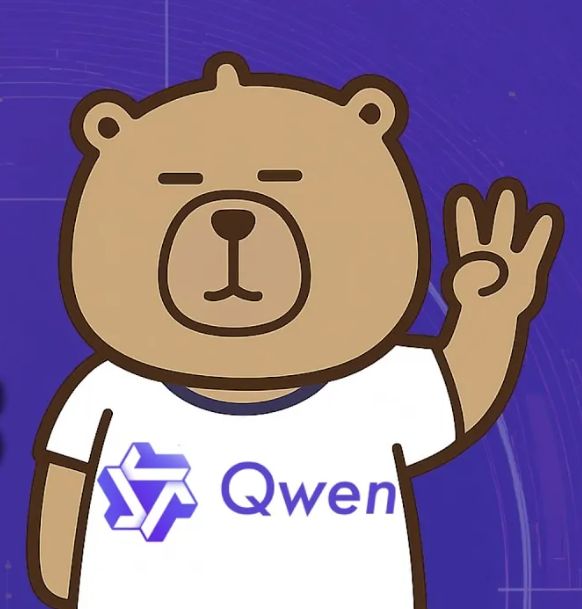On-chain Credit Guarantee Trading Mechanism Based on TBC Underlying Technology: Exploring a New Global Trust System for Commodity Circulation
The trust dilemma faced by traditional e-commerce and the potential breakthrough offered by blockchain.
In the traditional e-commerce model, transactions between buyers and sellers always revolve around third-party intermediary platforms—whether it’s Taobao, Amazon, or emerging social e-commerce platforms. These platforms build trust through services such as fund escrow, credit evaluation systems, and dispute arbitration, but they also bring significant pain points: high commissions erode profits, platform data monopolies restrict user autonomy, cross-border transactions are limited by platform rules and national boundaries, and even “store closures” or “traffic restrictions” by platforms make it difficult for small and medium-sized merchants to survive. More critically, ordinary users lack a reliable trust carrier when trading privately in social scenarios (such as WeChat or forums). The primitive model of “payment before delivery” or “delivery before payment” is highly susceptible to fraud, restricting the efficiency of goods circulation. The emergence of blockchain technology offers a new approach to solving this dilemma: can a trust guarantee system be built that requires no third-party intermediaries, allows buyers and sellers to control assets autonomously, and makes the entire transaction process transparent and traceable, using “code as law” smart contracts, immutable on-chain data, and decentralized co-management mechanisms? TBC is a high-performance blockchain infrastructure designed for the future, planned to support smart contracts, multi-signature accounts, on-chain data storage, and other features, with potential for low latency, low fees, and cross-chain compatibility. This article will explore a practical path for an “on-chain credit guarantee trading mechanism” based on TBC’s underlying technology, with the core goal of replacing intermediary trust with technical means, enabling individuals and merchants worldwide to transact directly and truly achieve “borderless circulation of goods.”
Core Mechanism: How TBC Underlying Technology Supports “Disintermediated Credit Guarantee”
The essence of this trading mechanism is: buyers and sellers jointly manage collateral assets and payments through smart contracts or multi-signature accounts on the TBC chain, replacing intermediary escrow with “co-management of assets + conditional triggers” to ensure transaction fairness. The process can be divided into four key stages, relying entirely on TBC’s planned technical capabilities to achieve security and automation:
1. Transaction Initiation: On-chain storage of product information, low-cost establishment of trust Merchants do not need to join a platform and can directly record product details (text descriptions, images, quality inspection reports, etc.) through a “product information contract” on the TBC chain. TBC will support structured data storage in the future; merchants only need to submit information in the required format, and the chain will automatically generate a unique index (similar to a hash value), forming a traceable “digital product file.” At this point, a transaction link containing “product index + seller address + collateral requirements” is generated—this link is essentially an entry point for TBC on-chain transactions, only a string of characters in length, and can be shared via any channel such as social software or forums. In the future, TBC’s on-chain storage functionality will be optimized for millisecond-level write speed, and records will be permanently accessible, thoroughly solving the trust issue of “no physical reference in online transactions.”
2. Asset Co-management: Collateralizing TBC or on-chain stablecoins to build a “bidirectional constraint” mechanism After both parties reach an agreement, two operations must be completed on the TBC chain:
• Seller collateralizes a “credit guarantee deposit”: A certain amount of TBC native tokens or TBC chain-anchored stablecoins (such as TBC-USD) is deposited into a “co-managed account” controlled by a smart contract, usually amounting to 5%-10% of the product value, as a guarantee for “truthful delivery”;
• Buyer pays the “full amount”: The payment (also in TBC or on-chain stablecoins) is deposited into the co-managed account, and the funds are in a “frozen state,” with neither party able to use them unilaterally.
In the future, TBC’s smart contracts will support flexible fund rule configurations, such as customizable freeze durations and release conditions. At the same time, TBC’s multi-signature account function (such as M-of-N signatures) can serve as an alternative—if both parties do not trust the smart contract, they can set “buyer + seller + third-party notary” to jointly sign for fund release, further enhancing asset security.
3. Performance Execution: On-chain conditional triggers, automatic completion of fund and asset transfers
• Seller ships goods: The seller sends the product and obtains a logistics tracking number. In the future, TBC will support “on-chain logistics information” functionality, allowing the seller to directly register the tracking number via the contract, and the buyer can check logistics progress in real time;
• Buyer confirms receipt: After receiving and verifying the product, the buyer signs a “confirm receipt” transaction on the TBC chain, triggering the smart contract to release funds:
- The seller’s “credit guarantee deposit” is fully returned;
- The buyer’s “full payment” is transferred to the seller’s address;
• Automatic refund upon timeout: If the buyer does not confirm within the specified time (e.g., 7 days), the smart contract defaults the transaction as completed and automatically releases funds to the seller. If the seller fails to ship or the product seriously deviates from the description, the buyer can initiate a “dispute arbitration.” In the future, TBC will integrate on-chain arbitration protocols (such as community reputation-based node voting mechanisms) to quickly resolve disputes.
TBC’s “low-latency confirmation” feature will ensure real-time synchronization of logistics information and fund status; the “conditional trigger” logic of smart contracts is fully automated, avoiding human intervention; the dispute resolution mechanism will be optimized through community consensus to enhance fairness and efficiency.
4. Transaction Closed Loop: Data accumulation and credit building, constructing a decentralized reputation system After each transaction is completed, relevant data (product index, collateral records, performance results) are permanently stored on the TBC chain, forming an immutable “transaction file.” The addresses of both buyers and sellers will accumulate on-chain credit based on performance records—for example, an address with five consecutive successful transactions will be marked as “high credit,” and can enjoy lower collateral rates or priority matching services in subsequent transactions. In the future, TBC’s “scalable storage” capability will support long-term preservation of transaction data, and privacy will be protected through technologies such as zero-knowledge proofs; the on-chain credit system requires no endorsement from centralized institutions and is maintained entirely by market participants, forming a positive incentive where “credit is asset.”
Practical Value: Why Is This a Key Step for “Disintermediated E-commerce”?
This mechanism, combined with TBC’s planned technical capabilities, directly addresses the pain points of traditional e-commerce and early blockchain transactions. Its practical significance is reflected in three aspects:
1. Cost Revolution: Enabling small and medium-sized merchants and individual sellers to “go light” No need to join a platform, pay commissions, or build an independent site—merchants only need to share an on-chain link to reach global users. For example, in second-hand mobile phone transactions, sellers can post product indexes on forums, and buyers can directly complete collateral and payment via TBC on-chain contracts. Transaction costs drop from the traditional platform’s 5%-15% to almost zero, significantly increasing profit margins.
2. Trust Upgrade: From “relying on platforms” to “relying on technology” On-chain asset co-management and conditional trigger mechanisms minimize the risks of “delivery before payment” or “payment before delivery.” Buyers don’t have to worry about “paying but not receiving goods” (if the seller doesn’t ship, funds can’t be accessed), and sellers don’t have to worry about “shipping but not receiving payment” (after buyer confirms receipt or upon timeout, funds are automatically credited). Technology replaces intermediaries as the trust carrier, truly achieving “transaction is trust.”
3. Global Circulation: Breaking national and platform barriers TBC’s planned cross-chain compatibility and low-fee features will make small cross-border transactions feasible. For example, handicraft sellers in Southeast Asia can sell directly to European buyers, display products via on-chain indexes, and settle with TBC or on-chain stablecoins, without being restricted by Amazon’s regional limitations or PayPal’s high fees. The “national borders” of goods circulation are completely broken, truly achieving “global borderless transactions.”
Future Outlook: TBC Technology Evolution Drives Trust System Innovation
As a future-oriented blockchain infrastructure, TBC’s planned technical upgrades will further unlock the potential of this credit guarantee mechanism:
1. On-chain Data Storage Optimization In the future, TBC will support more efficient structured data storage, allowing merchants to directly upload product details (such as high-definition images and videos). The chain will automatically generate searchable indexes, eliminating reliance on external storage like IPFS and lowering the usage threshold.
2. Multi-asset Collateral Support TBC will expand the asset compatibility of smart contracts, supporting other on-chain assets besides TBC native tokens as collateral media, enhancing transaction flexibility.
3. Privacy Protection Upgrade By integrating zero-knowledge proof technologies such as zk-SNARKs, TBC will allow sellers to selectively disclose product information—for example, only publicizing key parameters (such as phone model and condition), while encrypting logistics tracking numbers and identity data, balancing transparency and privacy needs.
4. DAO Governance and Community Arbitration In the future, TBC will introduce decentralized autonomous organizations (DAO), with community nodes jointly formulating dispute resolution rules. For example, when buyers and sellers disagree on product quality, the DAO can randomly select nodes to form an arbitration panel, which decides fund allocation ratios through voting, reducing human intervention.
5. Modular Compliance Framework TBC will develop pluggable compliance modules to support regulatory requirements in different countries. For example, U.S. users must verify their identity through on-chain KYC, EU user transactions must automatically attach VAT information, and small merchants can choose a “simple compliance mode” to lower the usage threshold.
Disclaimer: The content of this article solely reflects the author's opinion and does not represent the platform in any capacity. This article is not intended to serve as a reference for making investment decisions.
You may also like
Signal calls ramp up: Bitcoin Q4 valuation pushed to $200,000

X402: Revolution or Just Another Narrative Bubble?

Tariff concerns temporarily eased, is the bull market rally sounding again?
The whale with a 100% win rate has not taken profits yet and has increased their ETH long positions again this morning.

AI Crypto Trading Competition: Is Alibaba the Ultimate Winner?
Domestic large AI models have made a strong showing in the AI trading competition, with DeepSeek reclaiming the top spot.

